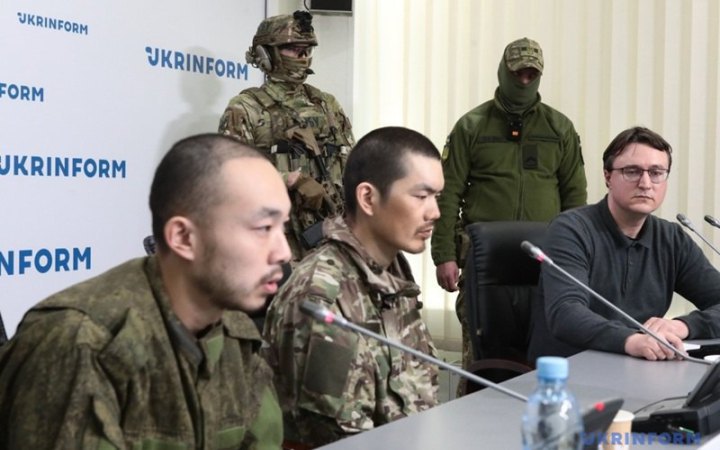Two Chinese citizens – Zhang Renbo and Wang Guangjun – who were taken prisoner in early April in Donetsk Region, expressed satisfaction with their treatment in Ukraine. They believe they were “lucky not only to survive, but also to be treated normally in captivity”.
They said this during a press conference at Ukrinform.
It was noted that the prisoners of war are being held in proper conditions, and the press conference was held with their consent – to demonstrate to the world that not only Russians are participating in the war on Russia’s side.
Both prisoners of war stated that they were treated well, and that Guangjun was “deeply impressed with the Ukrainian military”.
Renbo, in turn, said: “We have been moved to a safe place and are being treated well. They also gave us a meal from McDonald’s.”
Both said that their relatives did not know they were in captivity, they had no contact with them, and international organisations had not visited them. Renbo added that he was ready to be punished for his participation in the war, as he wanted to return home.
On 8 April, it became known that the Ukrainian military had captured two Chinese soldiers. In total, they were fighting as part of a group of six Chinese soldiers. This happened in Donetsk Region – unlike the participation of North Korean citizens, whom Russia is using in the Kursk direction.
- The Chinese citizens currently fighting against Ukraine began serving in Russia last year. According to LB.ua, citing intelligence sources, Chinese nationals began arriving at Russian training centres mainly in autumn 2024. They have been signing contracts with the Russian army since spring 2024 – and in some cases, since summer 2023.
- Russia has previously used citizens of other countries in hostilities. Most of them were from poor countries, agreeing to fight for money or being deceived into joining the frontline by promises of jobs in Russia. There were also Iranian instructors who trained Russians to operate Shahed drones. The DPRK military, in contrast, is used by Russia as a contingent – not as individual recruits.








